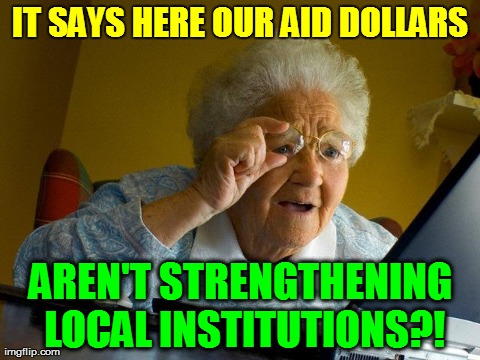Global health icon says aid must build local systems
Paul Farmer asks how we “can imagine eliminating cholera without building municipal water systems?”
Whether helping local farmers increase their crop production or supporting neighbors to rebuild after a natural disaster, few Americans would disagree that the aim of US foreign assistance must be to help people help themselves. But sixty years of foreign aid has shown that international donors alone cannot fix the problems of developing countries.
Paul Farmer reminds us in his Foreign Affairs article, “Rethinking Foreign Aid,” that too often US foreign aid is implemented from the top down. It seems to have lost sight of the real objective—the actual needs of people who are poor.
That why we advocate with decision makers in Washington DC to improve the way the US government delivers aid. For US foreign aid to be effective, who delivers it and how it is delivered, matters–something the US public understands.
Farmer suggests “five ways forward” for the aid industry:
- Step 1: Reward aid institutions and staff who localize aid dollars.
- Step 2: Prioritize implementation with national counterparts at every step of the process.
- Step 3: Reassess how we evaluate risk. The issue of corruption and money lost to fraud is an area that merits more study and better data. (Stay tuned for forthcoming Oxfam research on this issue next year!)
- Step 4: Challenge common assumptions about what is considered sustainable and cost-effective in fragile settings.
- Step 5: Prioritize the transfer of aid functions to local authorities.
Oxfam agrees that these steps will help enable US foreign aid programs to better support national and local leaders as they take action to lift themselves and their communities out of poverty. We’re glad to see Dr. Farmer taking it forward into global health and development discussions.
Because aid is not the solution to poverty… People are.
